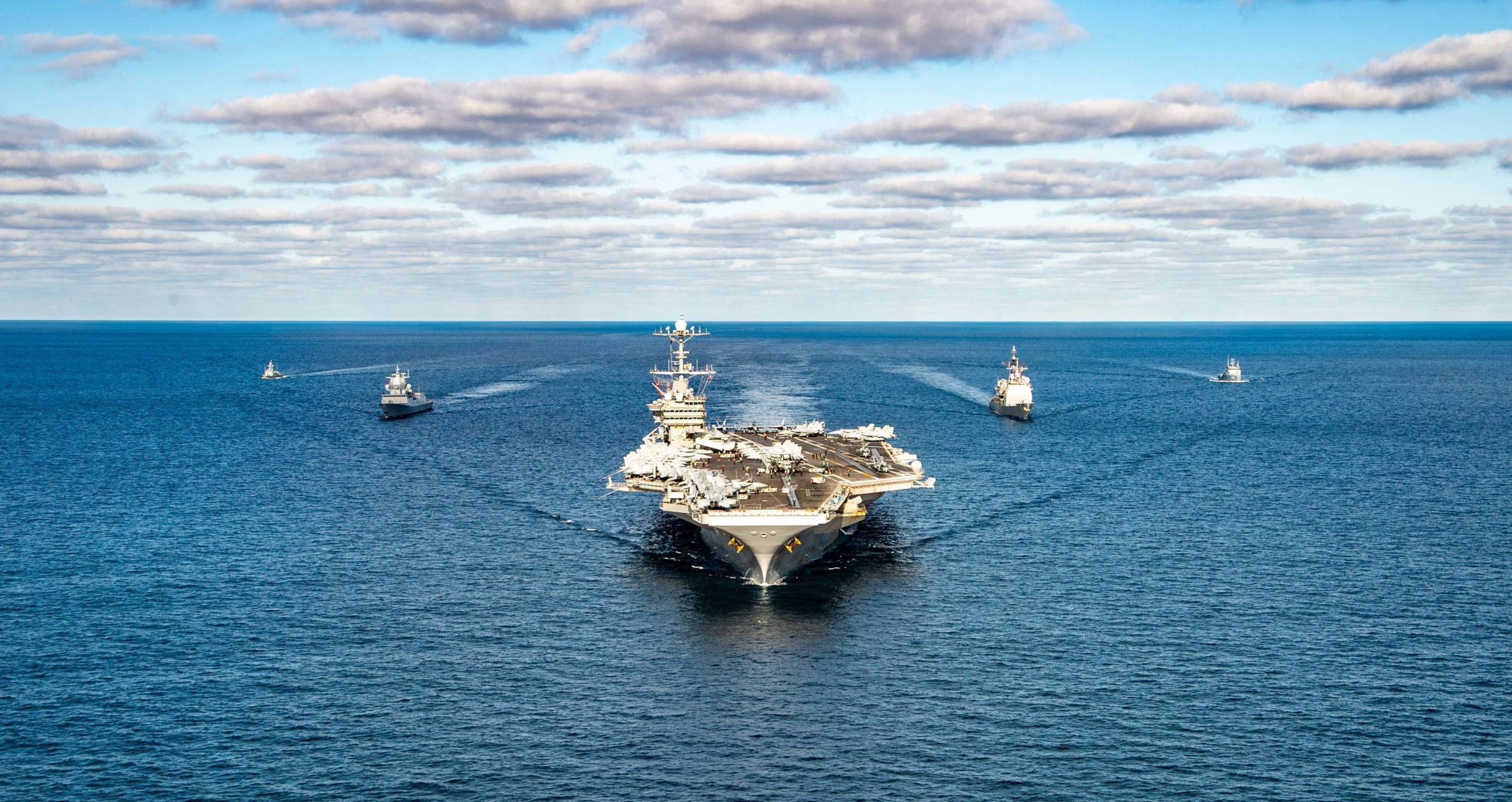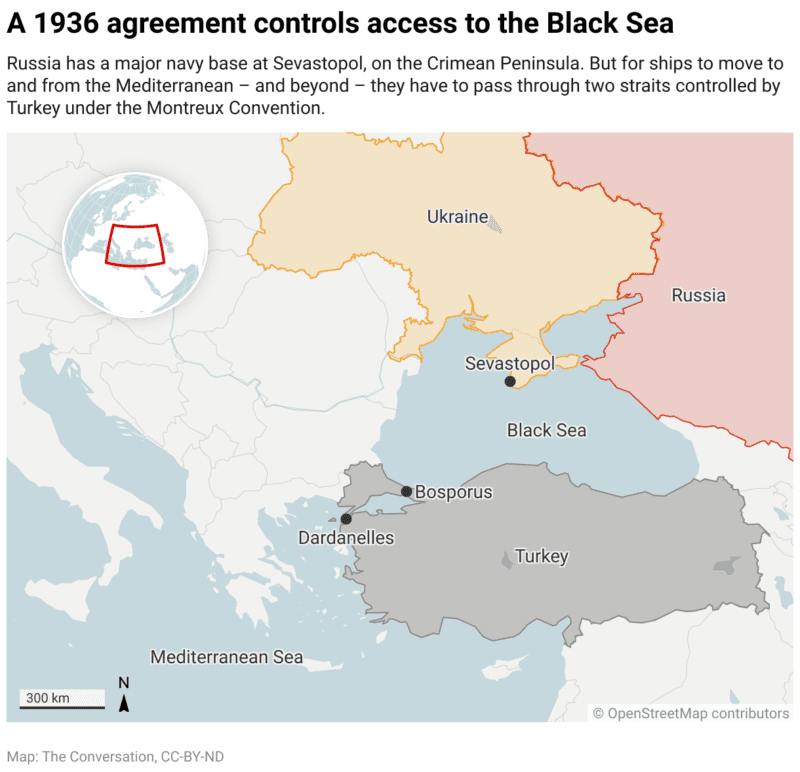Hung Cao – A Navy Diver In The Pentagon Briefing Room
Hung Cao and the Fight to Rebuild America’s Maritime Power Before the Next War Arrives by Captain John Konrad (gCaptain) The first thing you notice about the US Navy’s Undersecretary...

While most of the world is concerned with keeping Russian fighter jets out of NATO airspace, Russian warships have already incurred on NATO territorial waters. So why can’t the US Navy can’t send an Aircraft Carrier into the Black Sea to protect Romania and NATO merchant ships or help Ukraine? According to a UN Treaty, they are too big and heavy.
by Alpaslan Ozerdem (The Conversation) As bad as the Ukraine war is so far, an international agreement signed in 1936 is preventing it from getting even worse.
The Montreux Convention Regarding the Regime of the Straits gives Turkey control over the water route between the Black Sea – home to a major Russian naval force – and the Mediterranean Sea and beyond.
It sets limits on the passage of civilian vessels and military warships through the Dardanelles and the Bosporus straits, which with the Sea of Marmara between them form the seagoing link between the Black Sea and the Mediterranean.

The international agreement was signed by Australia, Bulgaria, France, Greece, Japan, Romania, Yugoslavia, the United Kingdom, the Soviet Union and Turkey and has been in effect since November 1936.
Now the Montreux Convention is serving an important role in the Ukraine conflict. Ukraine has asked Turkey to close the straits to Russian warships, highlighting the Turkish role in keeping regional peace. The Turkish government agreed on Feb. 28, 2022. However, several Russian warships entered the Black Sea in early February. And Turkey has said it would not prevent Russian warships from entering the Black Sea if Russia claimed they were returning to their home port.
Four key elements in the Montreux Convention regulate which vessels may enter the Black Sea in wartime:
Turkey has used the convention’s powers before. During World War II, Turkey closed the straits to warships belonging to combatant nations. That prevented the Axis powers from sending their warships to attack the Soviet Union – and blocked the Soviet navy from participating in combat in the Mediterranean.
In the current situation, the Turkish government finds itself in a difficult position, as both Ukraine and Russia are important partners in critical energy and military trade agreements. Turkey, a NATO member since 1952, wants to strengthen its ties with the West while not upsetting Russia. Its control over these key straits may test its balancing act.
Prof Alpaslan Özerdem is Dean of the Jimmy and Rosalynn Carter School for Peace and Conflict Resolution. Prof Özerdem specializes in conflict resolution, peacebuilding, and post-conflict reconstruction. Via The Conversation
gCaptain UPDATE: US Naval Institute reports that on March 1st Turkey closed off the Bosphorus and Dardanelles straits to warships from any country, whether or not they border the Black Sea, following Russia’s invasion of Ukraine… except if the warship is homeported in the Black Sea.

Subscribe to gCaptain Daily and stay informed with the latest global maritime and offshore news
Essential news coupled with the finest maritime content sourced from across the globe.
Sign Up